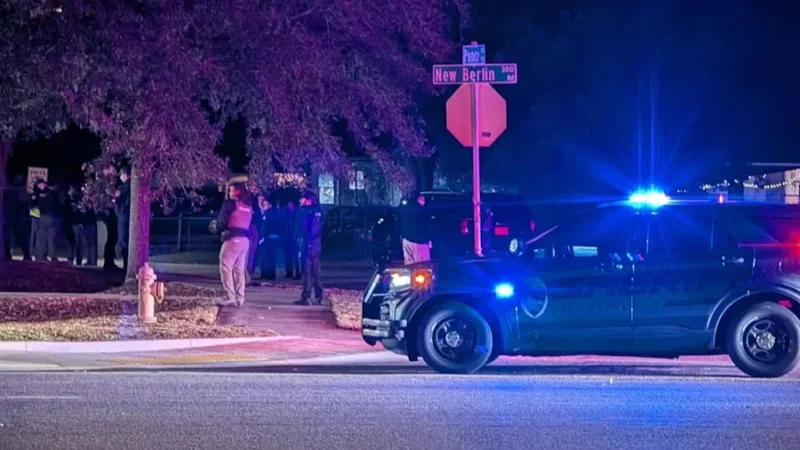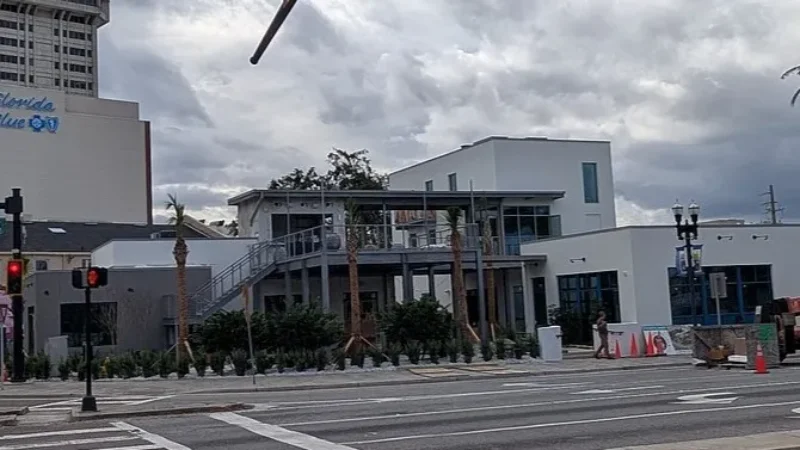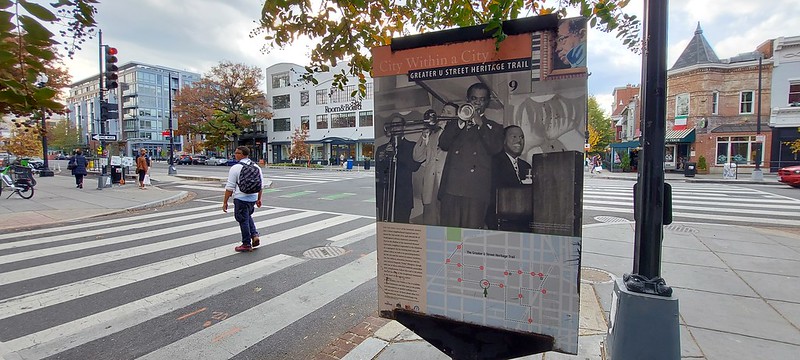
Jacksonville’s entry into the federal rail corridor program is a chance for the city to seize its transportation future. Local leaders must step up to deliver on this longtime goal – will they get on board?
The background
The U.S. Department of Transportation’s Federal Railroad Administration (FRA) has awarded $8.2 billion to construct 10 passenger rail projects across the country and more for corridor planning activities nationwide. This follows a $16.4 billion investment announced last month in 25 rail projects of national significance along America’s busiest rail corridor.

Among them was an award to the Florida Department of Transportation of a Corridor Identification and Development (“Corridor ID”) grant to begin studying passenger rail between Jacksonville, Orlando and Miami.
According to the FRA, “The corridor would provide new or enhanced service on one or more existing alignments. The corridor sponsor would enter Step 1 of the program to develop a scope, schedule, and cost estimate for preparing, completing, or documenting its service development plan.” Up to $500,000 will be allocated for this rail planning effort.
The corridor would also potentially also extend from Orlando International Airport to Tampa.
The start of this process represents an opportunity for Jacksonville to take a leadership role in developing passenger rail into and out of North Florida.
Corridor ID
The Corridor ID program is part of a national effort under the Biden-Harris administration to develop a pipeline of intercity passenger rail projects. That means turning mere ideas for rail services into real plans for how these services would be constructed and operated, ready to be built with future funding from the Federal-State Partnership for Intercity Passenger Rail program, which has already funded high-speed rail projects like Brightline West and California High-Speed Rail.

This grant to Florida marks the beginning of the process of envisioning what it would look like to connect Florida’s largest cities, and joining the Corridor ID pipeline moves Jacksonville up the line for making that a reality.
There are already past studies that can be leaned on to support the effort.
Although this is only the first of three steps in the Corridor ID process, the grant sets the tone for everything that comes after. As the initial scoping transitions into the creation of a Service Development Plan and then environmental review, FDOT and Jacksonville will have access to federal funds to support moving the corridor forward. Ultimately, once a plan is ready, the partnership will then need to seek up to 80% of the cost from the federal government.

Jacksonville’s rail history
Jacksonville has a storied past for passenger rail. Henry Flagler’s Florida East Coast (FEC) Railway operated rail service from Jacksonville to Miami (and at one point Key West) between the late 19th and mid-20th century.
The CSX A-Line, originally constructed in 1884 as the Jacksonville, Tampa and Key West Railway, and later incorporated into Henry Plant’s Plant System, connected Jacksonville with Central Florida. Paralleling U.S. Highway 17 within the Jacksonville metropolitan area, the rail corridor runs through Jacksonville’s Rail Yard District, North Riverside, Riverside, Murray Hill, Ortega and near NAS Jacksonville, and then through Clay County’s Orange Park, Fleming Island and Green Cove Springs as well as Palatka in Putnam County.
The FEC and CSX, along with several other railroads, once converged in LaVilla at the Jacksonville Terminal. Opened in 1897 and expanded in 1919, the Jacksonville Terminal was once the largest rail station south of Washington, D.C. At its height, 20,000 passengers a day boarded long-distance trains to other Florida cities, New York, Chicago and points west.
The 1960s would bring an end to this, as billions of government dollars poured into highway and airport construction. By the time Amtrak took over most passenger rail in 1971, the FEC had already ended its passenger services, and just three years later, the terminal closed, with Amtrak relocating to a smaller facility on Clifford Lane.
In the 1990s, interest had arisen in reopening the train station, which had been converted into the Prime Osborn Convention Center in 1986, to return Amtrak to Downtown. But two decades later, these plans remained by the wayside, the victim of a lack of urgency by city leaders and broader headwinds after the end of Florida High Speed Rail.
By 2012, All Aboard Florida, the predecessor to Brightline, had emerged. The first privately owned rail company in the U.S. in decades, it proposed to reintroduce intercity passenger rail on the FEC Railway. Jacksonville was included on the map, a logical step considering that the city represents the north end of the FEC line.
However, Jacksonville’s leadership took few steps to attract future service, and as a result, Brightline prioritized a Tampa segment as their next step after Orlando, despite Jacksonville’s existing position and infrastructure being a much simpler prospect for passenger rail development.
Now, as progress is underway developing the corridor for service to Tampa, Jacksonville stands as a clear next step, and the city’s selection for Corridor ID represents the starting line for that development.
A new rail vision
So what could passenger rail’s resurgence in Jacksonville look like?
The restoration and revitalization of the Jacksonville Terminal at the Prime Osborn could serve as the center point of a vibrant LaVilla, with Amtrak, Brightline, and commuter trains all serving destinations like Miami, Orlando, Tampa, New Orleans, Atlanta, and points beyond. Intermediate stops along the FEC to Miami could include St. Augustine, Daytona Beach, and Cocoa, as well as a potential stop in the suburbs of Jacksonville, like Avenues Walk.

What will that take? An FDOT study from January 2023 confirmed that additional passenger rail along the FEC to Jacksonville represents a challenge because North Florida is a smaller region than Miami or Orlando. That means much like Brightline’s Tampa expansion, it will take partnership and creativity.
Although the Florida Department of Transportation is the primary recipient of the Corridor ID selection, local leadership will be critical in getting rail service to the finish line. Much like the city’s successful bid for a Four Seasons Hotel, advocacy is necessary to demonstrate the value of the FEC corridor to a potential initial operator, most likely Brightline. Such a move would be exactly the kind of catalyzing development Jaxsons have long hoped to see in LaVilla and Downtown.
Even before the trains are rolling, the city of Jacksonville and Jacksonville Transportation Authority can start preparing for passenger trains and transit-oriented development at station sites.
The North Florida Transportation Planning Organization can also begin studying the needs for rail service for future federal grants, including infrastructure like double track and the Moultrie Speedway. Originally constructed in 1925 as the Moultrie Cutoff, the 29-mile FEC line eliminated 20 miles of previous track with a nearly straight line between St. Augustine and Bunnell. With few existing grade crossings, steps could be taken sooner rather than later to remove them and upgrade the line, enabling faster passenger train speeds and safer travel for riders and drivers alike. Making decisions like this now will be key to delivering passenger rail service.
Additional opportunities
Across the St. Johns River, Clay County has long been recognized as having one of the longest commuting times in the state, solidifying the CSX A-Line corridor as another corridor in the region that makes sense for additional passenger rail services. In 2019, the FRA awarded Amtrak $3.85 million to rehabilitate 52 miles of CSX A-Line track between Palatka and Deland. As a part of that project, CSX agreed to transfer ownership of that segment to Amtrak.
In 2007, the CSX A-Line between Deland and Osceola County was acquired by FDOT for $432 million, which paved the way for the 2014 implementation of Orlando’s 61-mile SunRail commuter rail system. This means, only 50 of 163 miles of railroad track between Downtown Jacksonville and Central Florida currently remain in the ownership of CSX.
Rail service in action
Passenger rail service to and from Jacksonville could take several forms, depending on the Service Development Plan and public support for passenger rail. Given potential alternatives, a phased approach to passenger rail development is likely in the cards.
On the FEC, initial progress in partnership with Brightline could focus on developing service north of Brevard County, constructing passenger stations, train facilities, and track upgrades. Brightline’s planned station in Brevard could serve as a transfer point to enable service to Jacksonville sooner while improvements in South Florida are built to enable through-service. Longer-term capacity improvements could enable higher speeds, expanded service to Miami, Orlando, and Tampa, and eventually transform Jacksonville into a critical midway point for interstate services to points beyond.

Amtrak already operates its Silver Meteor and Silver Star trains on the A-Line, with passenger rail stations in Northwest Jacksonville and Downtown Palatka. Collaborating with Amtrak for additional stations in Downtown Jacksonville and Clay County would offer the region enhanced intercity passenger rail access. Longer-term commuter rail development could establish infill stations as a fast, competitive option for regional travel.
This opportunity is Jacksonville’s time to lead. Not only should there be a serious conversation about advancing plans for bringing Amtrak back to Downtown Jacksonville and attracting Brightline service, the pros and cons of acquiring the remaining short segment of the CSX A-Line for additional intercity and regional commuter services should be vetted sooner rather than later as well. These steps lay the groundwork for higher-speed travel to St. Augustine, Central Florida, and Miami, as well as points beyond.
Now is the time for local leaders to stand together and learn what it takes to attract these major investments through the Corridor ID process. The opportunity for passenger rail will only become a reality if we are willing to make it so. So let’s get all aboard.






